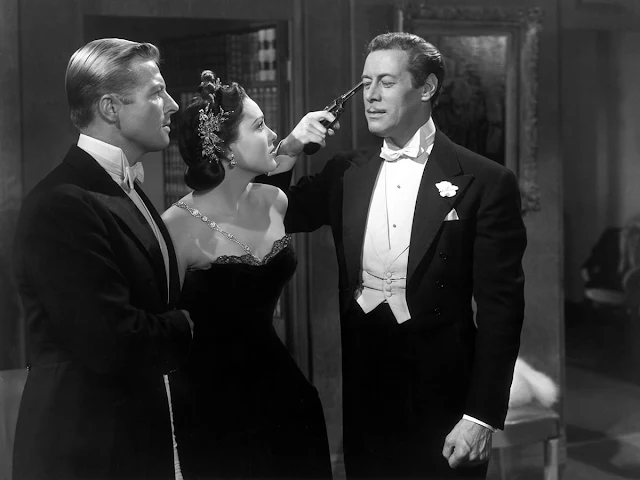 |
| Rudy Vallee and Betty Grable in The Beautiful Blonde From Bashful Bend |
There's not much reason for anyone other than hardcore Preston Sturges fans to see The Beautiful Blonde From Bashful Bend, even though it was his last American film (he made one more, Les Carnets du Major Thompson, in France in 1955) and the only one in Technicolor. It has all the slapstick anarchy of his later films, like The Miracle of Morgan's Creek (1943), but none of the wit of his best, among which I'd name The Lady Eve (1941), Sullivan's Travels (1941), and The Palm Beach Story (1942). In those great comedies, he worked with stars like Henry Fonda, Joel McCrea, Barbara Stanwyck, and Claudette Colbert, letting them unbend in surprising and hilarious ways. In the later comedies, he stuck to purely comic actors like Eddie Bracken and Betty Hutton, and there's a bumptiousness about those films that can be a little wearying, though there's still some wit in their setups, like Hutton's mysterious pregnancy in The Miracle of Morgan's Creek and Bracken's mistaken heroism in Hail the Conquering Hero (1944). The Beautiful Blonde is all bumptiousness, getting most of its laughs from character clowns like Hugh Herbert, El Brendel, and Sterling Holloway, and from some tired gags like Porter Hall's character getting repeatedly shot in the ass. It's a Western movie spoof, with Betty Grable as the title character, a dance hall girl who's a wicked hand with a pistol and who gets mistaken for the new schoolmarm when she flees to another town after shooting the judge (Hall). Cesar Romero is the nominal romantic lead, but Sturges isn't interested in romance in this movie; all he wants to do is stage outrageous gunfights and pull off slightly risqué jokes that had the censors on edge. It was, deservedly, a flop, but also undeservedly made Sturges persona non grata in Hollywood, after the failure of the more entertaining Unfaithfully Yours (1948), which had more of the old wit and less of the late bumptiousness.


